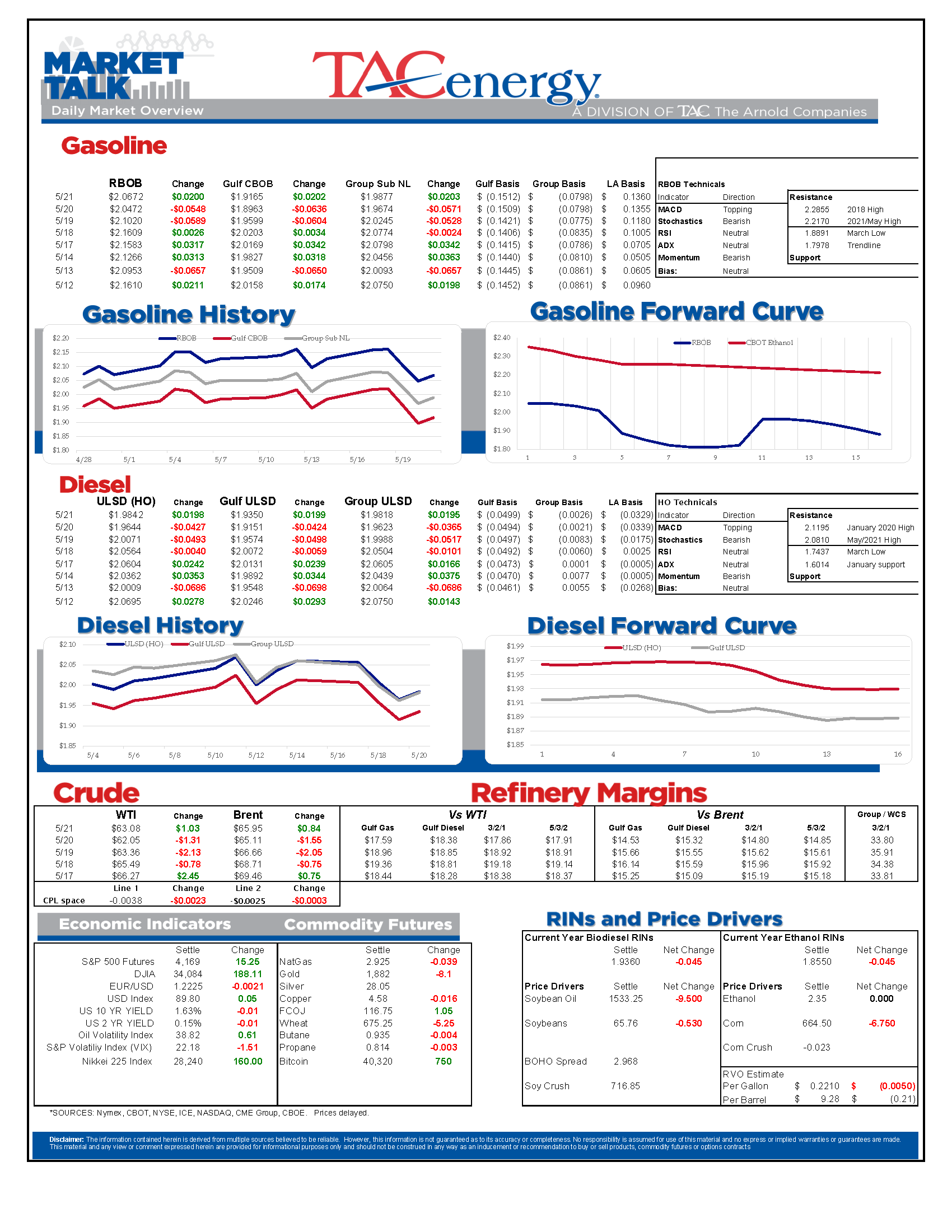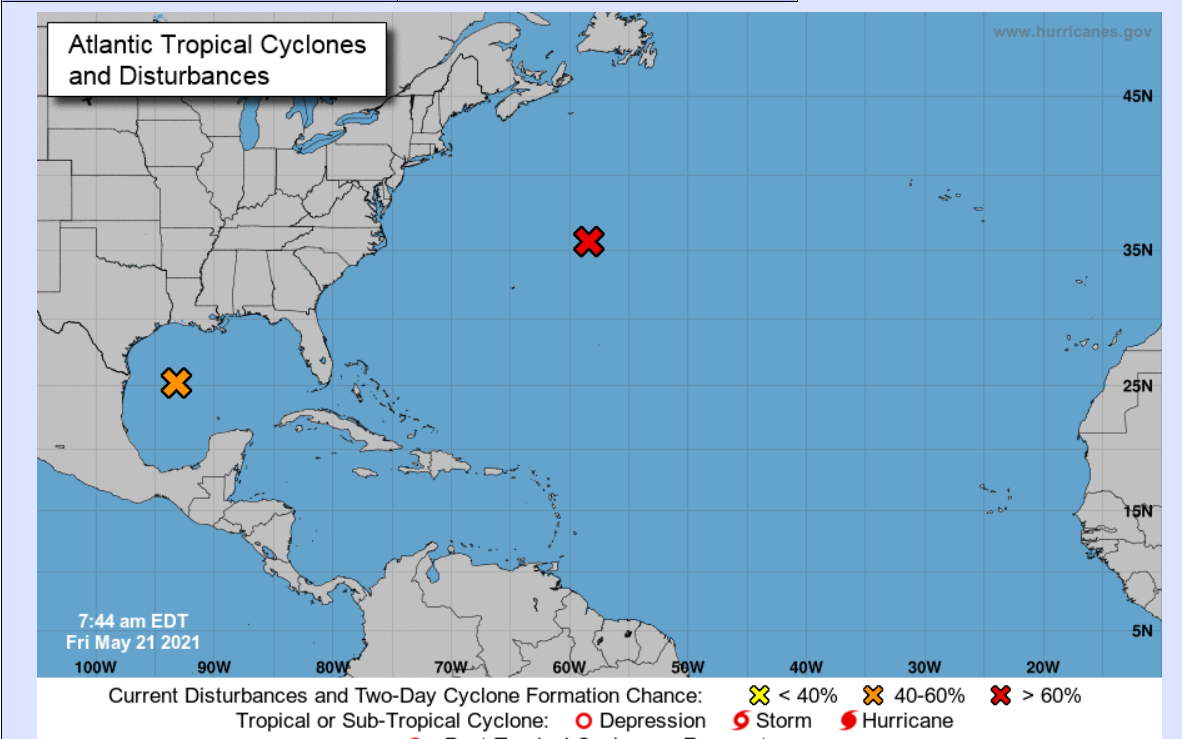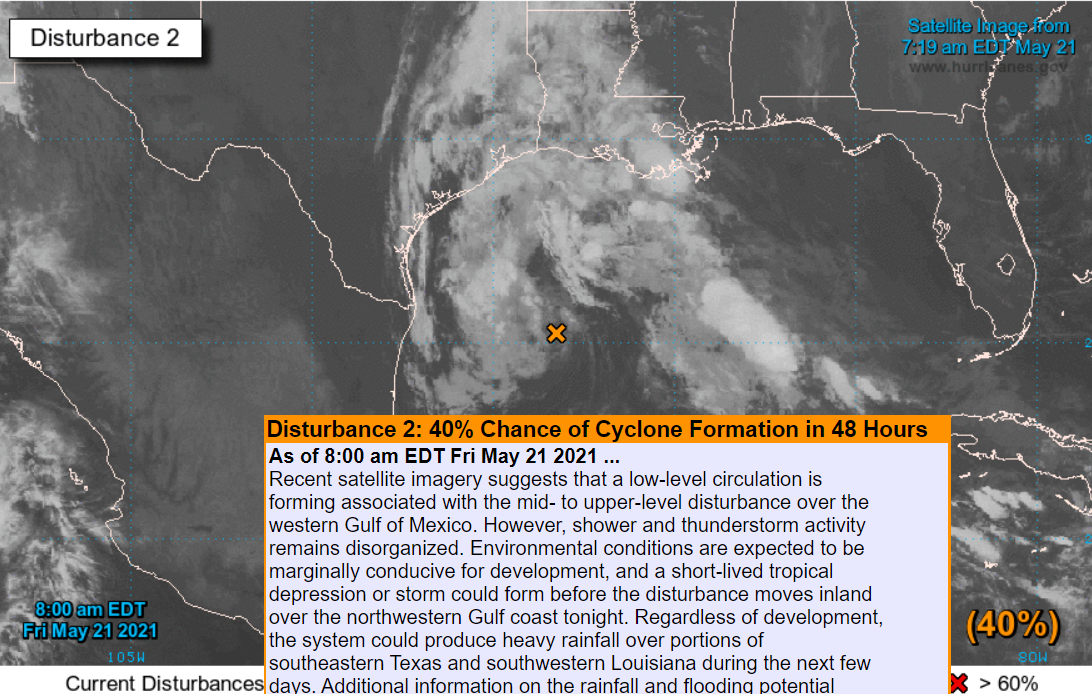Pivotal Price Action Over The Next Week

After two days of heavy selling, energy prices are trying to bounce to start Friday’s session. A break in the risk-off selling seems to be at hand as U.S. equity futures are also pointing higher this morning after a rough week. The price action over the next week looks like it could be pivotal long term as refined product futures are testing the bullish trend lines on their weekly charts, and a break lower will make today’s rally look like a dead cat bounce with another 20 cents of downside to come, while a hold above current levels leaves the door open to testing new highs for the year in June.
More reports that Iran was close to an agreement to lift sanctions (which IF true could bring another 500,000-2 million barrels/day of oil back onto the world market within the year) earned some of the credit for the latest wave of selling Thursday. That announcement was not confirmed by U.S. officials however, and coincidentally came around the same time that a ceasefire in Gaza was announced, which so far has put a stop to the rockets Iran helped build from being fired into Israel.
Hurricane season doesn’t officially start for another week, but already there are two potential storm systems being tracked. The first near Bermuda (which would be named Ana) is unlikely to threaten the U.S., but the second in the Gulf of Mexico could briefly reach tropical storm strength and bring more heavy rain and wind to the Gulf Coast that’s been battered by storms all week, causing several refinery units to be knocked offline.
NOAA is predicting another above-average year for storm activity in the Atlantic basin, with 13-20 named storms, 3-5 of which could be major hurricanes. Given the recent increase in storm activity, the agency is also increasing the “average” number of storms in a year from 12 to 14. That’s not as many as the record setting season we saw last year, but of course it only takes one to cause a major supply disruption since half of the country’s refining capacity sits on the gulf coast, and the region is more vulnerable now due to the saturation that’s occurred this week.
RIN prices joined the selloff in fuel and grain prices Thursday, with reports that the EPA was planning to hold renewable obligations for 2021 and 2022 unchanged due to the COVID-inspired drop in total fuel demand adding to the negative sentiment. As the chart below shows however, the nickel drop in prices this week barely registers on the chart after a 60 cent rally in the past month, and buyers still seem eager to step in whenever there’s a dip.
Who is running the show? On the same day the president made an executive order instructing government agencies to review climate change impacts, a partisan feud between FERC commissioners is leaving pipeline project approvals in the lurch. The FERC situation is eerily similar to the strange reaction by the FTC commissioner last week, when they tried to claim the Speedway sale might be illegal, after it had already gone through.
A new bill proposed in congress Thursday would create a blenders tax credit of $1.50-$2/gallon for sustainable aviation fuel (SAF). The bill is widely supported by the industry, with over 60 organizations showing support for the bill. One interesting note on the bill is that it specifically excludes fuels made from palm fatty acids, which have become a highly controversial “renewable” fuel since they arguably do more harm to the environment than traditional fuels, which is an argument the ethanol lobby will not enjoy if it spreads to other programs as well.
Click here to download a PDF of today's TACenergy Market Talk.
Latest Posts
Energy Markets Rally Again Thursday After A Choppy Wednesday Session
Week 16 - US DOE Inventory Recap
Energy Markets Trading Quietly In The Red As Ethanol Prices Rally To Five-Month High
The Struggle For Renewable Producers Continues As A Rapid Influx Of Supply And Crashing Credit Prices Make Biodiesel
Social Media
News & Views
View All
Energy Markets Rally Again Thursday After A Choppy Wednesday Session
Energy markets are trying to rally again Thursday after a choppy Wednesday session. RBOB gasoline futures are leading the push higher, on pace for a 3rd consecutive day of gains after finding a temporary floor Tuesday and have added 12 cents from those lows.
Equity markets are pointing sharply lower after a weak Q1 GDP estimate which seems to have contributed to a pullback in product prices over the past few minutes, but don’t be surprised if the “bad news is good news” low interest rate junkies start jumping in later on.
The DOE’s weekly report showed sluggish demand for gasoline and diesel, but inventory levels in most markets continue to follow their typical seasonal trends. Refinery runs held fairly steady last week with crude inputs down slightly but total gross throughputs up slightly as most facilities are now back online from a busy spring maintenance season and geared up for peak demand this summer.
Propane and propylene exports spiked to a record high north of 2.3 million barrels/day last week, which demonstrates both the US’s growing influence on global product markets, and the steady shift towards “other” products besides traditional gasoline and diesel in the level of importance for refiners.
The EIA acknowledged this morning that its weak diesel consumption estimates reflected the switch to Renewable Diesel on the West Coast, although they did not provide any timeline for when that data will be included in the weekly survey. The agency acknowledged that more than 4% of the total US consumption is now a combination of RD and Biodiesel, and that number is expected to continue to grow this year. This morning’s note also suggested that weak manufacturing activity was to blame for the sluggish diesel demand across the US, while other reports suggest the freight recession continued through Q1 of this year, which is also contributing to the big shift from tight diesel markets to oversupplied in several regions.
Valero kicked off the Q1 earnings releases for refiners with solid net income of $1.2 billion that’s a far cry from the spectacular earnings north of $3 billion in the first quarter of 2023. The refining sector made $1.7 billion, down from $4.1 billion last year. That is a pattern that should be expected from other refiners as well as the industry returns to a more normal market after 2 unbelievable years. You wouldn’t guess it by looking at stock prices for refiners though, as they continue to trade near record highs despite the more modest earnings.
Another pattern we’re likely to see continue with other refiners is that Renewable earnings were down, despite a big increase in production as lower subsidies like RINs and LCFS credit values sting producers that rely on those to compete with traditional products. Valero’s SAF conversion project at its Diamond Green joint venture is progressing ahead of schedule and will give the company optionality to flip between RD and SAF depending on how the economics of those two products shakes out this year. Valero also shows part of why refiners continue to disappear in California, with operating expenses for its West Coast segment nearly 2X that of the other regions it operates in.

Week 16 - US DOE Inventory Recap

Energy Markets Trading Quietly In The Red As Ethanol Prices Rally To Five-Month High
Energy markets are trading quietly in the red to start Wednesday’s session after a healthy bounce Tuesday afternoon suggested the Israel-Iran-linked liquidation had finally run its course.
There are reports of more Ukrainian strikes on Russian energy assets overnight, but the sources are sketchy so far, and the market doesn’t seem to be reacting as if this is legitimate news.
Ethanol prices have rallied to a 5-month high this week as corn and other grain prices have rallied after the latest crop progress update highlighted risks to farmers this year, lower grain export expectations from Ukraine, and the approval of E15 blends this summer despite the fact it pollutes more. The rally in grain and renewables prices has also helped RIN values find a bid after it looked like they were about to test their 4-year lows last week.
The API reported small changes in refined product inventories last week, with gasoline stocks down about 600,000, while distillates were up 724,000. Crude oil inventories increased by 3.2 million barrels according to the industry-group estimates. The DOE’s weekly report is due out at its normal time this morning.
Total reported another upset at its Port Arthur refinery that’s been a frequent flier on the TCEQ alerts since the January deep freeze knocked it offline and damaged multiple operating units. This latest upset seems minor as the un-named unit impacted was returned to normal operations in under an hour. Gulf Coast basis markets have shrugged off most reports of refinery upsets this year as the region remains well supplied, and it’s unlikely we’ll see any impact from this news.
California conversely reacted in a big way to reports of an upset at Chevron’s El Segundo refinery outside of LA, with CARBOB basis values jumping by more than a dime. Energy News Today continued to show its value by reporting the upset before the flaring notice was even reported to area regulators, proving once again it’s ahead of the curve on refinery-related events. Another industry news outlet meanwhile struggled just to remember where the country’s largest diesel seller is located.
Click here to download a PDF of today's TACenergy Market Talk



